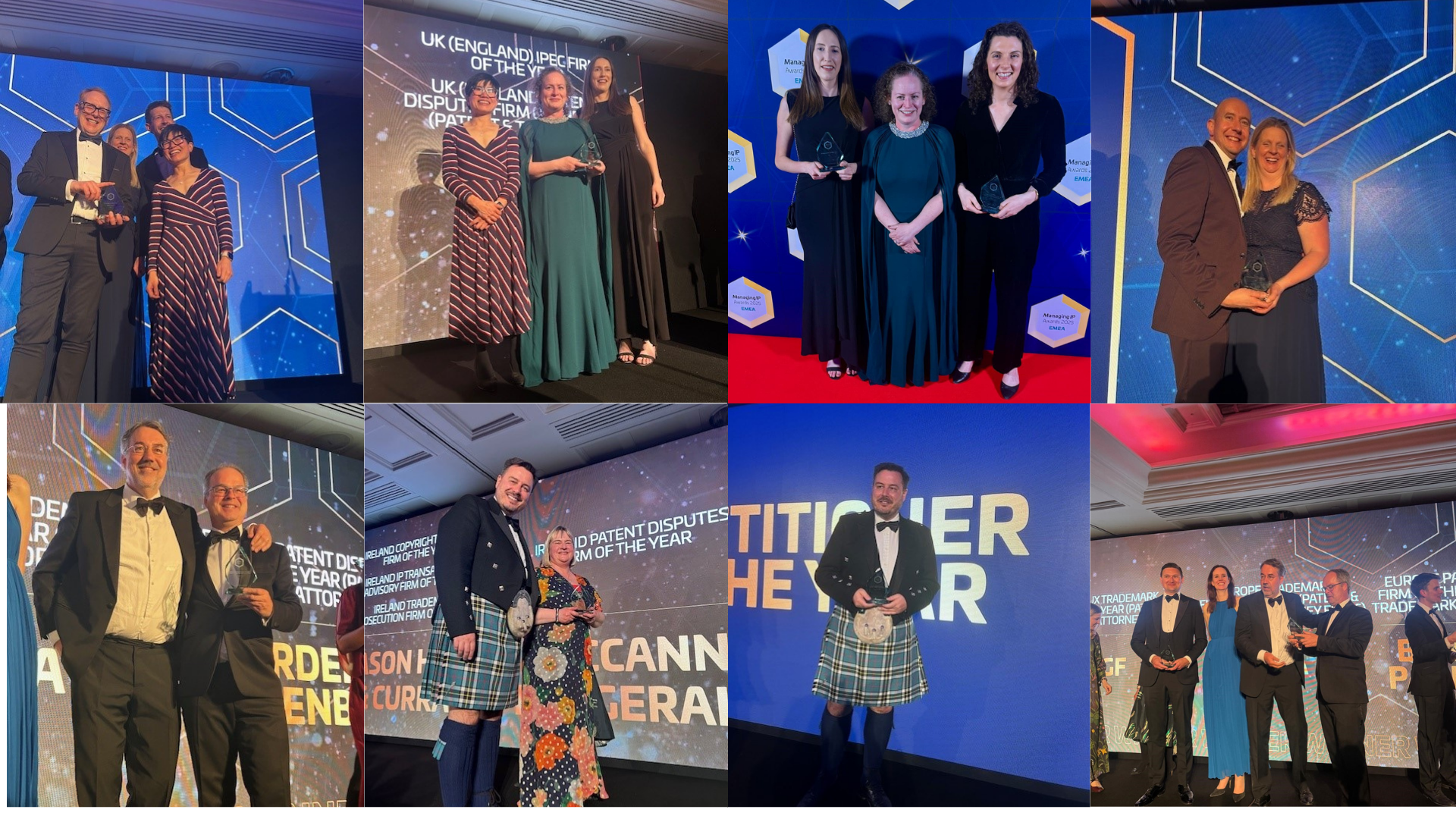News
Cost-Conscious IP Solutions for MedTech and Digital Health AI Innovators
October 2024
In the fast-evolving MedTech sector with the ever increasing prevalence of digital health solutions, artificial intelligence (AI) plays an increasingly common role in innovation, being used to improve diagnostics, treatments, and patient care. Start-ups and SMEs are driving innovation with AI-powered MedTech solutions across healthcare.
Capturing and protecting intellectual property (IP) is crucial for these companies to secure a competitive edge, attract investment, and ensure long-term success. However, many smaller enterprises face financial challenges relating to managing their IP.
Many SMEs and start-ups face similar financial challenges
This article covers suggestions for strengthening a business’s IP position without breaking the bank. A common challenge for SMEs and start-ups I hear is balancing the need to disclose innovations to attract investors without having adequate IP protection in place.
Often, start-ups and SMEs have limited funding and a significant consideration for them is how to best use the money available to establish the business. IP can sometimes take a back seat when funds are needed for wages, marketing, recruitment, R&D, consultant fees, and more. Many small companies feel stuck: they can’t afford to protect their ideas upfront, yet they need to share them to secure funding and market themselves.
This article provides strategies for helping to balance the need for secrecy with the necessity of disclosure to ensure productive conversations with third parties.
Why you should care about IP
For many MedTech AI companies, innovation is often the most valuable asset. AI technology takes time and expertise to develop, but may be easily replicated to a reasonable degree once on the market. Without adequate IP protection, competitors may copy these innovations, undermining the original developer’s market position.
IP protection offers several advantages:
- Market Exclusivity: Patents provide legal protection, preventing others from using, making, or selling the invention without permission. Trade marks provide brand protection to help safeguard your business’ reputation. Design protection can help prevent copycat designers if a product has a unique aesthetic, such as a GUI, or an AI-powered device with a characteristic shape. A business’ exclusivity in technology, design, and branding is important in establishing market dominance.
- Attracting Investment: Investors may be more likely to fund companies with a strong IP portfolio, as it indicates a lower risk of competitors entering the market with similar technologies. Well-protected IP can significantly enhance a company’s valuation.
- Monetisation Opportunities: IP can generate revenue through licensing, partnerships, or sale of the IP rights, providing funds for further R&D.
- Legal Recourse: In case of infringement, IP protection allows for legal action, potentially leading to compensation or injunctions.
So, it is clear IP protection can provide value to a business. Understandably, a small business may not have the funds to put in place all the IP protection it might want.
However, there are steps which can be taken to strengthen a business’s IP position, which need not cost the earth.
IP Education and Awareness
Educating yourself and your team about IP is a valuable time investment. By understanding the types of IP that exist, you are better informed to know what applies to your business, to help focus on what IP protection to obtain when funds are available. Many countries’ IP offices provide free resources on protecting IP and what protection is available.
It is a good idea not to leave IP at the bottom of the to-do list, since being well informed about good practices can save headaches later. For example, if you are working on an innovation which you are not looking to patent – yet – it is critical to keep that innovation secret until you have either filed a patent application or made a conscious business decision to disclose what you are working on. Once an invention is made public, it is no longer “new” and a patent cannot generally be granted for it.
As another example, putting in place procedures for people in your business around IP helps ensure everyone is aware of how to manage IP, including keeping innovations secret, having good documentation, having software code and data security procedures to prevent software IP leaking out of the business, having awareness of how to record ideas and inventions, and making clear how employees joining or leaving the business should (and should not) talk about your business activities.
Non-Disclosure Agreements (NDAs)
NDAs can provide an affordable legal agreement with anyone you work with (such as third party software coding company) to maintain confidentiality in discussions. It is worth involving legal counsel to ensure the NDA is drafted in a suitable way for your business, Also consider that if there is a breach of confidentiality, enforcing an NDA can be costly.
Patents and Trade Secrets
For AI-focussed businesses specifically, there can be significant value in AI innovations which can be protected as a trade secret. For example, the training data used to train an AI model, details of the AI model structure, and specific weighting factors in an AI model, are all data which allow an AI model to work especially well. To patent protect an AI innovation, it is often not necessary to provide the actual code, training data, or model weighting factors, provided there is enough information for someone else to perform the invention. A patent, if one is filed, should cover the functionality provided and how that is achieved, but need not recite your detailed data.
Patents can provide robust IP protection, but are often a significant financial investment for small companies, and it may not be financially feasible to file for a patent at an early stage of a business. Also, patents typically are published 18 months after filing, so anything in the application is then public.
To keep a trade secret, it is important to make it clear within the business that the trade secret information should be kept secret, that it is stored securely with secure access only for those who need access to it, and with procedures in place to ensure staff are aware of what data is secret and to keep it in the business.
Again, this comes back to having good procedure in place and an awareness of types of IP available and applicable to an AI business.
Trade marks, online presence, and designs
For those with some budget for IP registration, trademarks are a relatively inexpensive way to protect a business name, logo, or product name. Trade mark registration can be relatively inexpensive and offer strong protection for your brand.
Securing a desired internet domain name(s) and social media handles early on, even if they are not used immediately, helps prevent others from registering and using them.
For businesses providing a product with a unique aesthetic, registered design protection can add another facet of protection and can be obtained in a cost effective way.
Monitoring the landscape
Keeping an eye on the technological landscape can be a valuable way of thinking where to take a business, where there are market opportunities, and performing freedom to operate checks to avoid infringing other’s IP rights.
Once a business has its own enforceable IP rights, regularly checking whether anyone else looks to be infringing those rights is important to maximise the power of the IP in carving out an place in the market.
Plan for Future Growth
Young businesses may not have deep pockets for spending on IP rights, at least initially, but there is plenty that can be done to significantly improve a business’s IP position as mentioned above. As a business develops, IP should be a consideration alongside the other factors of the business which are budgeted for.
Even with limited funds, by allocating a small portion of budget each year to IP protection, this provides an investment in the business’s long-term value. Also, planning ahead to scale what IP protection is in place is valuable – consider expanding registered rights into new market territories, ensuring new innovations are captured and protected, and patenting core technologies fundamental to the business as the business develops.
Conclusion
By taking these affordable and manageable steps, MedTech AI businesses can safeguard their intellectual property to capture and add value to the business. By having a strong position from which to secure patents, safeguard trade secrets, establish strong branding, and negotiate favourable agreements, innovations can be protected, followed by investment, to ensure long-term success in the competitive AI-driven MedTech landscape.
With the right IP strategies in place, MedTech AI startups can focus on what they do best: innovating to improve healthcare outcomes.
This article was prepared by Patent Director Janine Swarbrick
































